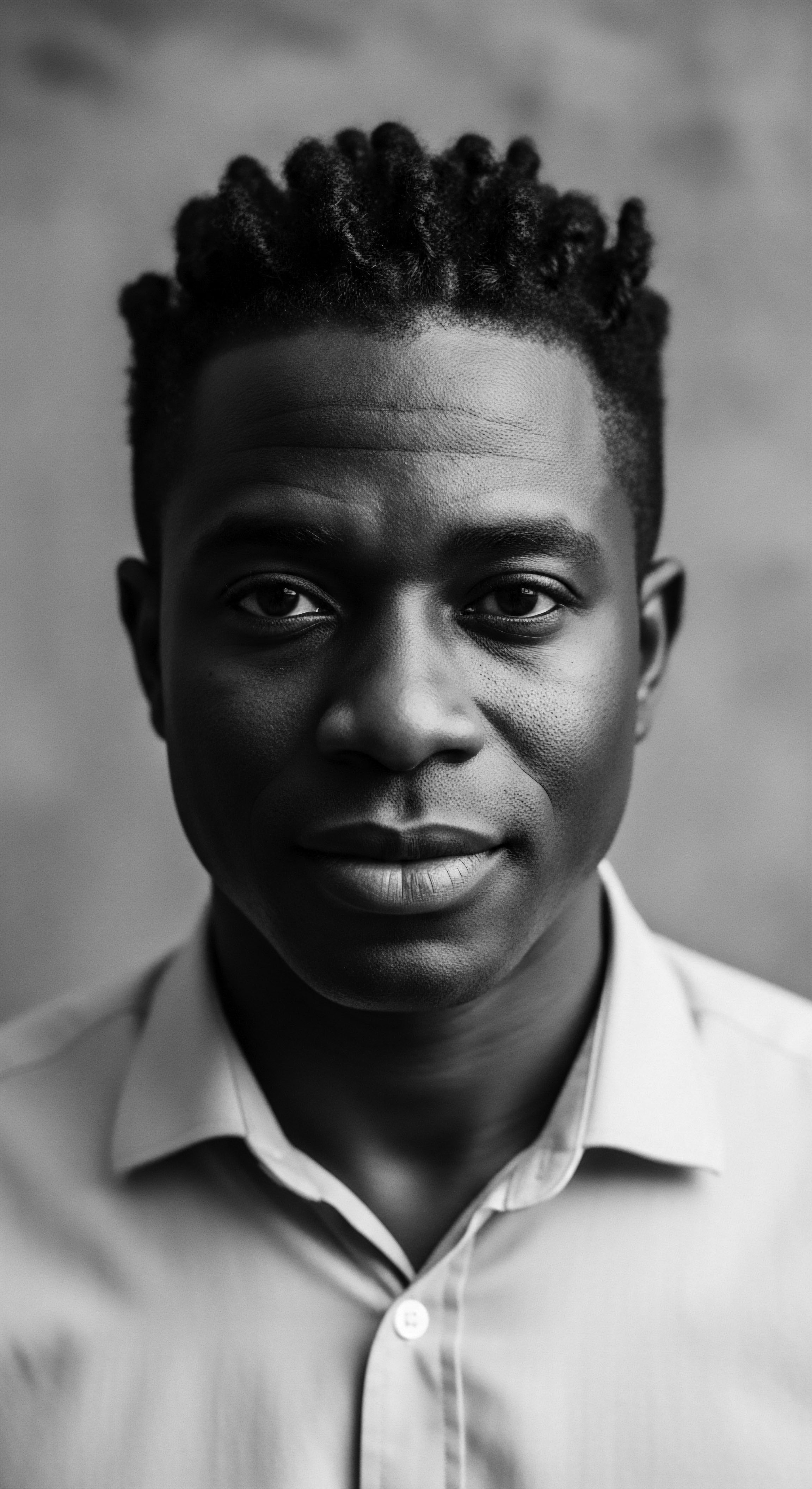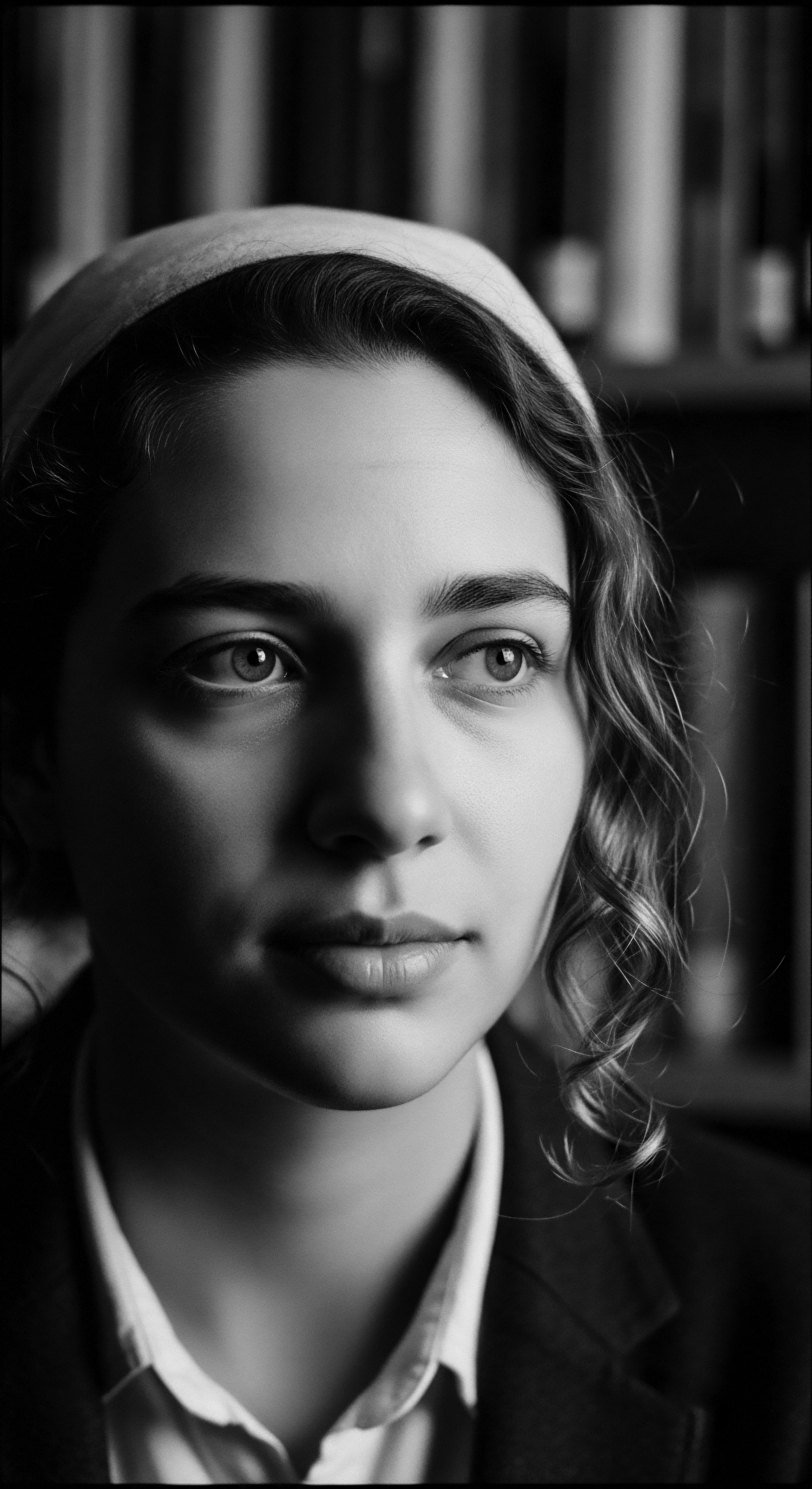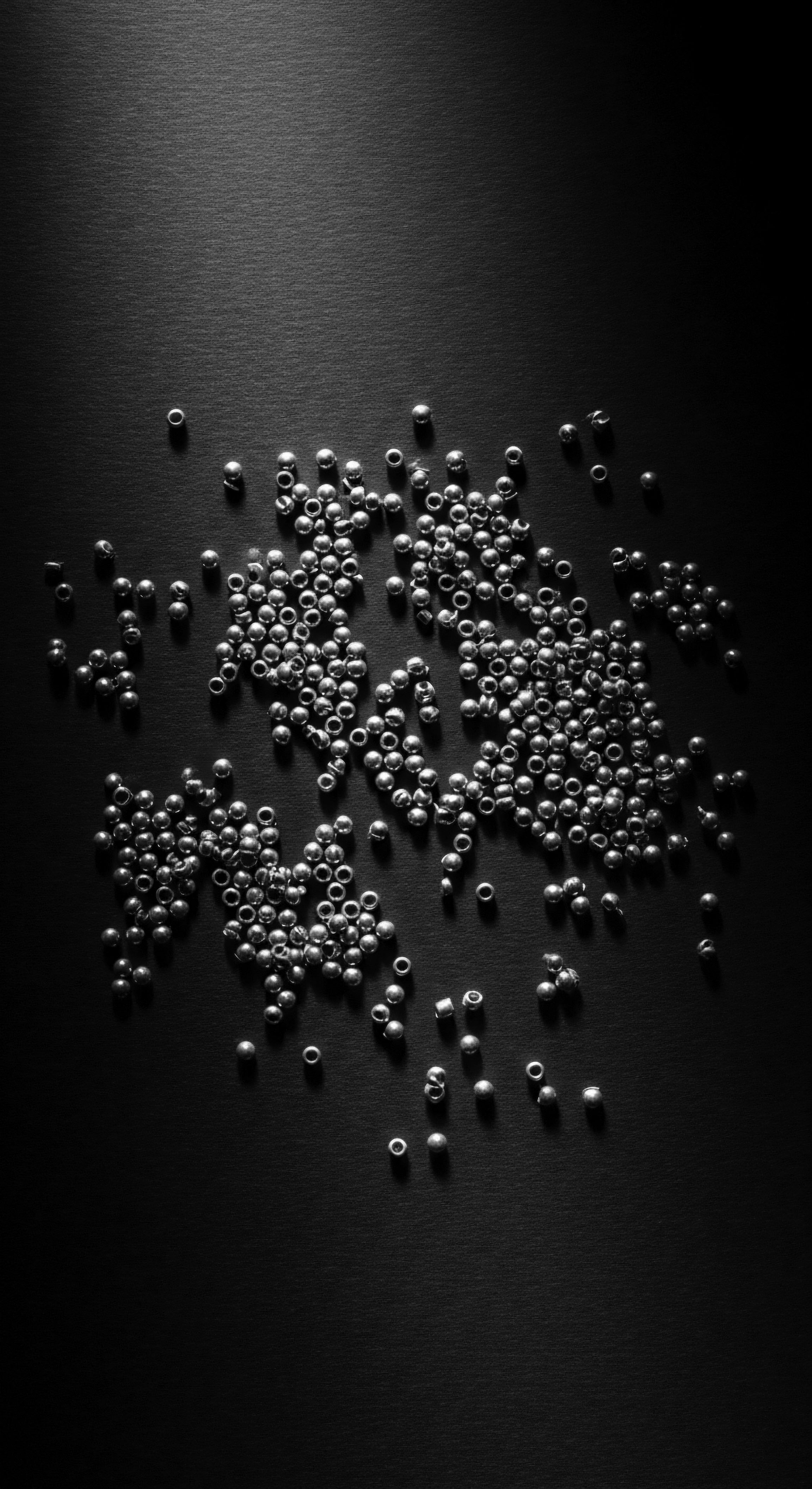
Roots
Consider for a moment the very helix of textured hair, each strand a coiled testament to centuries of ancestral wisdom and resilience. It rises from the scalp, a living conduit, and has long held a singular place in human societies, particularly within those of Black and mixed-race heritage. Head wraps, in their multitude of forms, have served as both a protective embrace and a declaration, intimately bound to the identity sculpted by such hair. This connection is not a recent innovation; it is a profound historical whisper, a legacy that traces back to the dawn of civilizations, echoing through ancient practices and spiritual beliefs.
Our exploration begins at the elemental level, observing how head wraps align with the very biology and social understanding of textured hair. They are not merely fabric; they are extensions of self, guardians of physical being, and symbols of spiritual alignment.

Ancestral Origins of Hair Adornment
Across various societies on the African continent, prior to the widespread impact of colonial incursions, hair carried significant weight beyond mere appearance. It acted as a visual lexicon, communicating a person’s age, marital status, social standing, tribal affiliation, and even their spiritual leanings. Hairstyles, often intricate and time-consuming, were ceremonial acts, often passed down through generations.
These practices fostered strong communal bonds during the hours spent in preparation. The act of touching or styling hair held deep meaning, viewed as a direct interaction with a potent aspect of one’s essence.
Within many African traditional religions, the head is seen as the seat of one’s spiritual force or ‘Ori’, a personal deity or destiny in Yoruba cosmology. Protecting and adorning the head, including the hair, became a practice of reverence and spiritual safeguarding. Head wraps, therefore, were among the earliest forms of adornment that served this dual purpose of practical protection and spiritual shielding.
The earliest evidence of head coverings spans millennia, with archaeological records and hieroglyphic depictions pointing to their presence in ancient societies as far back as 3000 BCE. In West Africa, for example, traditions relating to head coverings extend to the Kingdom of Ghana (300-1200 CE), where they were fashioned from locally woven textiles. These early wraps varied in their presentation, some indicating high social status, while others marked marital standing or participation in specific religious gatherings.

Textured Hair’s Ancient Significance
Textured hair, with its unique coiled structure, possesses inherent qualities that ancient communities understood and honored. Its density provided natural insulation, and its ability to hold intricate styles allowed for complex visual storytelling on the head. This hair was not simply a physical attribute; it was a cosmic antenna, a connection point to the divine and to ancestral realms. In some belief systems, hair was thought to absorb solar energy, linking the individual to a greater universal flow.
The very resilience of textured hair, its capacity to adapt and flourish in diverse climates, was likely observed and respected. Head wraps served to complement this natural design, offering an additional layer of defense against environmental elements like sun, dust, and wind, while also preserving the meticulous styling that often held symbolic messages.
Head wraps stand as living documents, their folds holding stories of ancient practices and deep spiritual connection, particularly for textured hair.

Anatomical Alignment and Ancestral Care
From a biological perspective, textured hair, especially highly coily types, benefits from protective measures that minimize manipulation and exposure. The structure of these strands, with their unique cuticle patterns, requires careful handling to retain moisture and prevent breakage. Ancient methods of care, including the use of natural oils and butters , often worked in concert with head coverings to create an optimal environment for hair health. Shea butter, for instance, a staple in many African communities, provided a barrier against harsh conditions, and its use was often paired with head wraps.
This traditional knowledge, passed down through generations, predates modern hair science but aligns with contemporary understanding of textured hair needs . The head wrap, in this light, emerges as an early scientific tool, an ancestral innovation for optimal hair preservation and vitality. It offered a means to shield delicate curls from tangling during sleep or from the rigors of daily activities, ensuring the hair remained healthy and strong, much as bonnets and sleep caps serve this purpose today.

Ritual
As the currents of history shifted, so too did the meaning and application of head wraps, evolving from emblems of spiritual sanctity and social markers to powerful instruments of resistance and cultural preservation. The ritualistic wearing of head wraps became a silent, yet potent, language across the African diaspora, its complexities echoing the journey of a people across continents and generations. This section considers how these cloths transformed from a matter of custom to an act of defiant ritual, deeply intertwined with the experience of textured hair.

The Transatlantic Passage and Cultural Persistence
The horrific transatlantic human trade attempted to strip away every vestige of identity from enslaved Africans. One of the first acts of dehumanization was often the forced shaving of hair, an attempt to sever their deep-seated spiritual and cultural connections to their heritage. In a world where overt expressions of ancestral practices were suppressed, the head wrap, though often imposed initially as a symbol of servitude and a practical measure against lice or harsh sun, became a covert canvas of cultural resilience .
Enslaved women transformed a badge of oppression into a symbol of defiance. They adopted the simple cotton kerchiefs provided by their captors and, through intricate tying techniques and the subtle arrangement of folds, imbued them with hidden meanings. These wraps communicated familial status, mourning, or even secret messages of resistance among communities, particularly in places like Suriname. This practice speaks to an extraordinary ingenuity and a refusal to allow the spirit to be conquered.

Spiritual Adornment in the New World
In Afro-diasporic spiritual traditions that developed in the Americas, such as Ifá, Santería, and Candomblé, the head wrap continued to hold profound spiritual significance. For initiates, known as Iyawós in some traditions, a white headscarf is worn at all times as a sign of purity and connection to the divine. The head, as the conduit for spiritual energy and the dwelling place of the ‘Ori’, must be protected and honored. This echoes ancient African beliefs and demonstrates the continuity of spiritual practice despite forced migration.
The choice of fabric, color, and wrapping style often carries specific spiritual connotations, representing deities, spiritual houses, or stages of initiation. These are not arbitrary choices; they are ritual garments, integral to the practice and identity of adherents. The physical act of wrapping becomes a meditative moment, a protective sealing of spiritual energy, and a visible declaration of faith.
Head wraps, enduring symbols of cultural pride, silently articulate stories of heritage and self-determination.

Practicality and Protection in Daily Life
Beyond their overt symbolic and spiritual functions, head wraps served a crucial practical purpose in the daily lives of Black women, especially those with textured hair.
- Sun and Dust Protection ❉ In agricultural settings or during arduous labor, head coverings shielded hair and scalp from harsh elements, preventing dryness and damage. This was particularly important for hair types prone to moisture loss.
- Hygiene and Maintenance ❉ They provided a means to keep hair contained, clean, and free from debris, particularly when access to extensive hair care tools or products was limited. This pragmatic utility ensured that textured hair, even under challenging conditions, received a degree of protection.
- Nighttime Shielding ❉ The tradition of protecting hair during sleep, now common with satin or silk bonnets, finds its ancestral roots in head wrapping practices. Covering the hair at night minimized tangling and moisture absorption by rough surfaces like cotton pillowcases, preserving styles and moisture.
These practical applications, born of necessity and ancestral wisdom, highlight the inherent connection between the head wrap and the physical care of textured hair, a link that persists into contemporary hair care regimens. The act of wrapping was a tender ritual, a moment of self-care and preservation in challenging circumstances, deeply rooted in the heritage of hair maintenance .
| Historical Period Pre-Colonial Africa |
| Primary Meaning/Use Social status, marital status, spiritual connection, tribal marker, aesthetic adornment. |
| Connection to Textured Hair Heritage Hair as sacred; wraps protect and honor the 'Ori' (head/destiny). |
| Historical Period Enslavement Era (Americas) |
| Primary Meaning/Use Imposed symbol of servitude, later transformed into covert resistance and identity preservation. |
| Connection to Textured Hair Heritage A means to protect hair under harsh labor, and to assert hidden cultural identity despite oppression. |
| Historical Period Post-Emancipation to Mid-20th Century |
| Primary Meaning/Use Homeliness, domesticity (imposed stereotype), but also quiet dignity, cultural continuity. |
| Connection to Textured Hair Heritage Maintained hair in absence of specialized products; signaled cultural grounding in a hostile environment. |
| Historical Period Civil Rights Era & Beyond |
| Primary Meaning/Use Symbol of Black Power, cultural pride, self-acceptance, fashion statement, spiritual alignment. |
| Connection to Textured Hair Heritage A reclamation of Black beauty standards; protective styling choice; visible connection to ancestral ways. |
| Historical Period The journey of head wraps reveals a profound adaptability, consistently serving as a marker of identity and care for textured hair across changing historical landscapes. |

Relay
The legacy of head wraps for textured hair identity, once a whispered secret and a defiant gesture, continues its relay through time, influencing contemporary expressions of style, spirituality, and self-possession. The historical instances of both imposition and reclamation serve as crucial markers in this enduring narrative, particularly illustrating the profound resilience of Black and mixed-race communities. The complexities of this journey extend beyond simple adornment, weaving into the very fabric of social justice and self-determination.

Laws of Control, Acts of Creative Defiance?
A particularly poignant chapter in the history of head wraps and their association with textured hair identity unfolds in late 18th-century colonial Louisiana. Governor Esteban Miró, in 1786, enacted the infamous Tignon Laws . These sumptuary laws mandated that women of African descent, whether enslaved or free, publicly cover their hair with a ‘tignon’ or headscarf. The explicit intent was to visually mark these women as members of a subordinate class, curbing their growing social and economic influence, which challenged the established racial hierarchy.
Historian Virginia M. Gould notes that Miró sought to control Creole women “who had become too light skinned or who dressed too elegantly, or who competed too freely with white women for status and thus threatened the social order.” (Gould, 1992, p. 195)
Yet, a remarkable act of cultural subversion transpired. Instead of diminishing their presence, Black women transformed this attempt at oppression into an extraordinary display of defiance and artistic expression. They responded by crafting elaborate tignons from luxurious, vibrant fabrics, adorning them with jewels, feathers, and intricate knots that often drew even more attention to their heads.
This act, far from signaling subservience, became a potent symbol of resistance , intellect, and unyielding beauty , redefining the tignon as a coronet of cultural pride. This singular historical example powerfully illuminates the connection between imposed restrictions on textured hair presentation and the deep-seated heritage of ingenuity in the face of adversity.

How Did Head Wraps Shape Early Afro-Diasporic Religious Practices?
The spiritual dimensions of head wraps extended into the syncretic religions that emerged from the African diaspora. In practices like Vodou, Santería, and Candomblé, the head remains the sacred space where the divine connects with the human. Specific head coverings, often white or patterned in ways linked to particular spirits or deities, are essential for rituals, initiations, and daily wear for devotees. These coverings serve to protect the spiritual energy of the wearer, to signify their dedication, and to honor the sacred presence within and around them.
The meticulous tying of a head wrap before spiritual observances is itself a ritual, a mindful preparation of self for communion. This practice underscores a foundational belief in many African spiritual systems ❉ that the head is a gateway, and its proper adornment facilitates connection, offers protection, and signals respect to both ancestors and divine forces. The material chosen, the colors utilized, and the very posture of the wrap contribute to its spiritual efficacy, rooting the practice firmly in an ancestral wisdom concerning human connection to the unseen world.

The Enduring Role of Head Wraps in Protective Styling?
The functional aspect of head wraps, particularly for textured hair, finds validation in modern trichology. Textured hair, by its very nature, is more susceptible to moisture loss and mechanical damage due to its coiled structure and exposed cuticle. Head wraps offer a crucial protective barrier.
- Moisture Retention ❉ Materials like silk and satin, traditionally used for protective hair coverings, minimize friction, which helps hair retain its natural oils and moisture. This reduces dryness and breakage.
- Environmental Shield ❉ Head wraps defend against environmental stressors such as sun exposure, wind, and pollution, all of which can compromise hair health and cuticle integrity.
- Style Preservation ❉ They help extend the life of hairstyles, from braids to twists, reducing the need for frequent manipulation, a key factor in minimizing damage to textured hair.
This scientific understanding simply affirms centuries of inherited wisdom. Ancestral practices instinctively employed head coverings to safeguard hair, recognizing their benefits long before the mechanisms were articulated through modern scientific inquiry. The seamless blend of historical practices and current scientific knowledge highlights the enduring wisdom embedded within textured hair heritage .
The history of head wraps is a profound commentary on the human spirit’s ability to transform constraints into canvases for cultural expression.
The tradition of head wrapping, therefore, is not a static relic of the past. It is a living, evolving practice that continues to provide both practical care for textured hair and a powerful means of cultural expression and spiritual connection. The continuum from ancient African kingdoms, through the trials of enslavement, to contemporary expressions of identity, showcases the deep and abiding heritage these cloths carry. They represent a language understood across generations, a visual anthem of survival, beauty, and persistent self-definition.

Reflection
The journey through the historical and spiritual connections between head wraps and textured hair identity reveals a profound truth ❉ these fabric adornments are far more than mere accessories. They embody a living, breathing archive of textured hair heritage , a testament to ancestral ingenuity, enduring cultural expression, and persistent spiritual grounding. From the sacred reverence for the head in ancient African societies, where hair served as a cosmic conduit and a social map, to the resilient acts of defiance woven into the tignons of enslaved women, head wraps have consistently functioned as both a shield and a crown.
They speak of a deep wisdom that understood the physical needs of coiled strands long before trichology provided the scientific language. They whisper stories of resistance, of communities finding voice and identity in the subtle tilt of a knot or the vibrant pattern of a textile. This enduring legacy, a constant thread connecting past and present, invites a deeper appreciation for the profound meaning held within each coil and every wrap. The “Soul of a Strand” indeed lives within these traditions, reminding us that true beauty often resides in the stories we carry, the heritage we honor, and the unwavering spirit we choose to display upon our crowns.

References
- Byrd, Ayana, and Tharps, Lori L. Hair Story ❉ Untangling the Roots of Black Hair in America. St. Martin’s Press, 2001.
- Gould, Virginia M. “The Free Women of Color of New Orleans ❉ Race, Status, and Power, 1782-1840.” In The Devil’s Lane ❉ Race and Sex in the Early South, edited by Catherine Clinton and Michele Gillespie, Oxford University Press, 1997.
- Griebel, Helen Bradley. “The African American Woman’s Headwrap ❉ Unwinding the Symbols.” Dress, vol. 22, no. 1, 1995, pp. 27-37.
- Sweet, Frank W. A History of the Caribbean ❉ From the Arawaks to the Present Day. Trafford Publishing, 2006.
- Wall, Cheryl A. Worrying the Line ❉ Black Women Writers, Lineage, and Literary Traditions. University of North Carolina Press, 2005.
